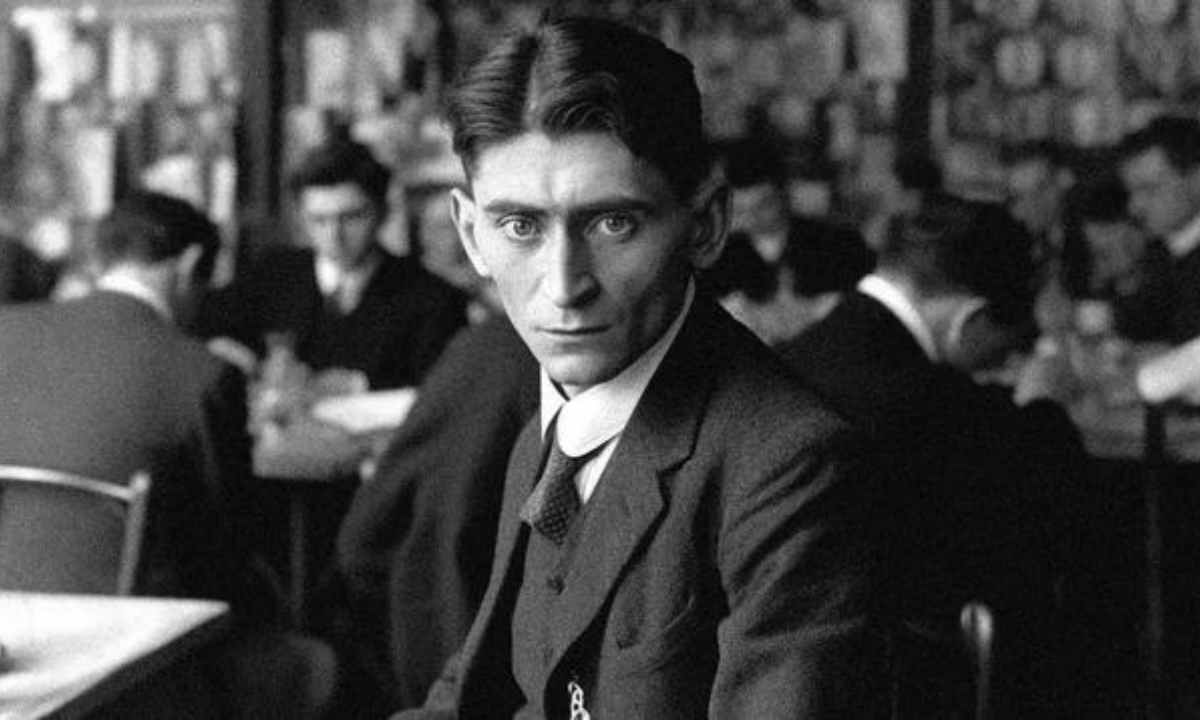7 Famous Works Of Franz Kafka | The Novelist Who Combines Reality With Bizarre!
Who Is Franz Kafka?
Franz Kafka (1883-1924) was a German-language novelist and writer from Prague. He is still one of the most significant literary figures. Kafka’s work is a unique blend of realism and the fantastic. He often portrayed isolated protagonists caught in bizarre and surreal scenarios. His stories delve deep into themes of alienation, existential anxiety, guilt, and absurdity. The term “Kafkaesque” has entered the English language to describe such absurd situations.
Kafka trained as a lawyer and worked full-time at an insurance company, limiting his writing to his free time. Despite his self-doubt leading him to burn an estimated 90 percent of his work, Kafka penned hundreds of letters and stories. However, only a few were published during his lifetime. Let’s dive into 7 of his most famous works.

1. The Metamorphosis

“The Metamorphosis” is Kafka’s best-known novella. The story is widely discussed among literary critics. It has had a significant impact on popular culture. There are many adaptations depicting Gregor as a cockroach as well.
Plot Summary
Gregor Samsa, a traveling salesman, wakes up one morning to find himself transformed into a monstrous insect. Initially, he thinks the change is temporary but soon realizes the gravity of his situation. Stuck in bed, Gregor reflects on his oppressive job and his role as the family’s sole breadwinner.
His transformation shocks his family, and they lock him in his room. His sister, Grete, is the only one who brings him food, which he only eats if it’s rotten. As Gregor adapts to his new body, he becomes more isolated. Eventually, his family starts neglecting him.
Gregor’s presence becomes a burden. After a series of unfortunate events, including being hit by an apple thrown by his father, Gregor dies of starvation. His family, relieved by his death, decides to move to a smaller apartment and look forward to a better future.
Themes
- Alienation and isolation
- The absurdity of existence
- Family dynamics and societal pressures
2. The Trial

“The Trial” is another of Kafka’s famous works, published posthumously. Kafka’s work was heavily influenced by Dostoevsky. “The Trial” remains a critical piece of 20th-century literature. The story is also adapted into various films and plays.
Plot Summary
Josef K., a bank clerk, is unexpectedly arrested on his 30th birthday by two agents for an unspecified crime. He is left free. But he must navigate a mysterious and inaccessible judicial system. Despite his efforts, Josef cannot understand or fight the charges against him.
Throughout the story, Josef encounters bizarre and hostile court officials, and his life becomes increasingly consumed by the trial. The novel ends abruptly with Josef’s execution on the eve of his 31st birthday.
Themes
- Bureaucratic absurdity and existential dread
- Powerlessness and oppression
- Paranoia and the search for justice
3. Letters to Milena

This book collects Kafka’s letters to Milena Jesenská, his love interest, offering a personal glimpse into his life. These letters are significant for understanding Kafka’s life and have greatly influenced literary studies.
Plot Summary
The letters are intimate and revealing, providing insight into Kafka’s personal thoughts, feelings, and struggles with his own identity and creative process.
Themes
- Love and longing
- Kafka’s personal struggles
4. Letter to His Father

Kafka’s strained relationship with his father is explored in this lengthy letter. This letter provides a deeper understanding of Kafka’s characters and themes and is a crucial piece for anyone studying his work.
Plot Summary
The letter candidly examines their troubled relationship, revealing Kafka’s fears and resentments.
Themes
- Parental authority and filial duty
- The impact of family dynamics on personal development
5. Franz Kafka: The Office Writings

This collection includes essays, letters, and articles from Kafka’s professional life as a lawyer. These writings offer valuable insights into Kafka’s worldview and how his professional life influenced his fiction.
Plot Summary
The writings cover Kafka’s work at the Workmen’s Accident Insurance Institute and his observations on workers’ rights and social justice.
Themes
- Bureaucracy and legalism
- Workers’ rights and social justice
6. In the Penal Colony

This short story, written in 1914, describes a harrowing execution device. The story is critically acclaimed and highlights Kafka’s ability to convey complex themes through dark, surreal narratives.
Plot Summary
Set in a penal colony, the story follows an explorer’s visit to see an elaborate torture and execution device that carves sentences onto prisoners’ skin. The officer in charge is deeply committed to the machine, which ultimately leads to his own demise.
Themes
- Justice and punishment
- The dehumanizing effects of bureaucracy
- Tradition vs. change
7. The Burrow

Written shortly before Kafka’s death, this story is about a creature’s efforts to secure its home. “The Burrow” is another example of Kafka’s anthropomorphic storytelling, which provides a unique perspective on existential themes
Plot Summary
A badger-like creature obsessively tries to fortify its burrow, constantly fearing invasion. The story ends abruptly, leaving the creature’s fate unknown.
Themes
- Fear and insecurity
- The quest for safety and the illusion of control
Conclusion
Franz Kafka’s works blend reality with the bizarre, creating thought-provoking narratives that continue to captivate readers. His exploration of existential dread, isolation, and the absurdity of life resonates across generations. Kafka’s enduring legacy in literature encourages readers to explore his strange and compelling worlds.
Also read,







